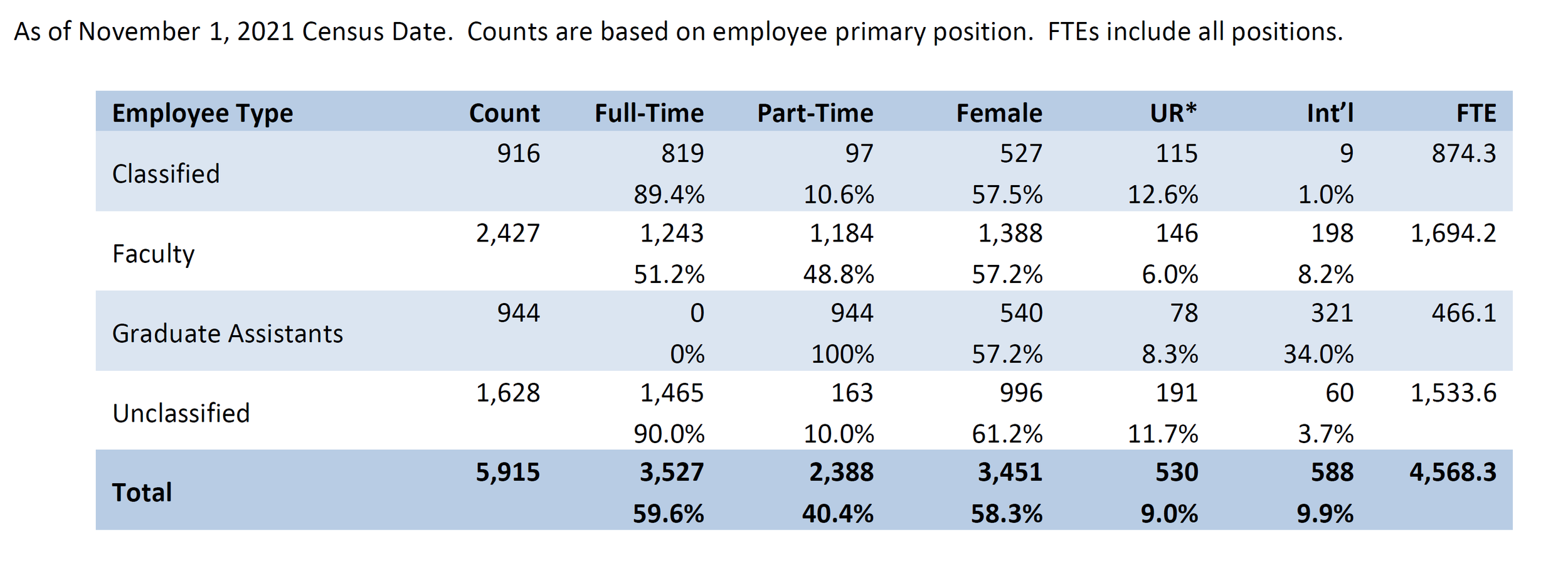Fewer Faculty, More Administrators
We don't need to tell you that OU's faculty has decreased over the past several years. You probably already see it in your shrinking departmental meetings and feel it in your increasing workload. In this month's newsletter, we will put some numbers to this decline.
In November's newsletter, we shared the national trend of the academic stretch-out, a situation where austerity cuts leads to fewer faculty who take on more work without an increase in pay. The evidence for this trend at OU can be seen by a comparison between faculty and administrators in two key metrics: spending and overall headcount.
Spending on faculty and administrators
There has been a 15% decline in the ratio of spending on faculty to administrators over the past 7 years, from 123% in 2015-16 to 108% in 2021-22. This means that faculty represent a shrinking proportion OU's budget, a troubling trend at an educational institution.
The ratio of faculty to administrators
As of 2021-2022, there about 8 faculty for every 10 administrators at OU. The precise ratio is 0.836 when measured as FTE (full-time equivalent), according to data from Institutional Effectiveness and Analytics. (Note: The FTE of faculty and administrators at OU is counted as 1 FTE for full-time and .5 FTE for part-time to compute the faculty to administrators ratio.)
The low ratio of faculty to administrators, like the spending data above, is an indication of how spending and resources at OU are not going directly to OU's educational mission.
For context, Kent State University has more faculty than administrators. Data from their Institutional Research shows a ratio of 1.1 faculty for every administrator. This comparison with Kent State shows that OU is far behind what another large public university can do in directing resources into academics.
It's also interesting to note that there was a higher ratio of faculty to administrators on the Athens campus until 2015-16, a timeline that coincides with the reducing proportion in faculty spending cited above. The priorities demonstrated in OU's budget are not a fact of how academia is structured; they are simply an unsustainable–and hopefully short-lived–trend in an overall context of the corporatization of higher education.
Putting numbers to our lived experience
Again, this data will come as no surprise to those of us who are currently teaching at OU. They reveal the inevitable outcome of the past several years: faculty reductions lead to a reduced faculty.
In her December 6 email, Provost Sayrs proposed a plan to hire up to 12 new faculty. This is a good start, but it doesn't come close to making up for the 165 full-time faculty we have lost since 2020. We as a faculty need to continue to use all the means at our disposal to press for a restoration of faculty lines. OU is an educational institution, and faculty are at the heart of the educational experience of our students.


